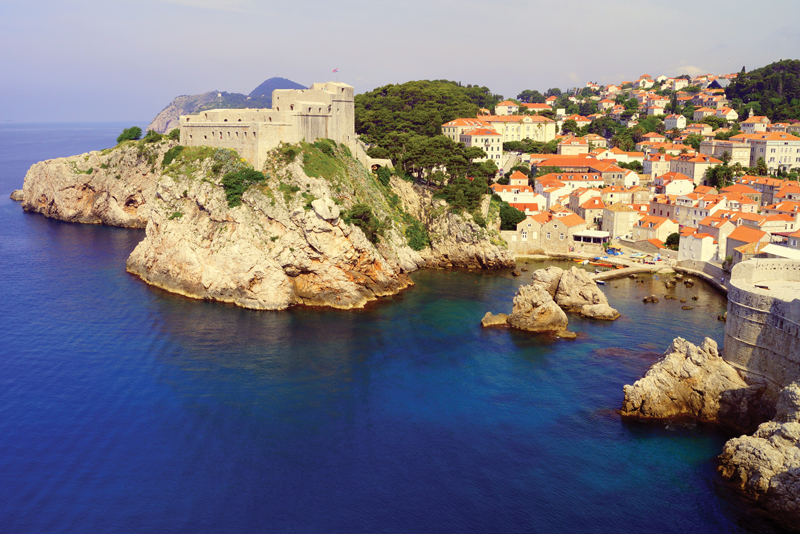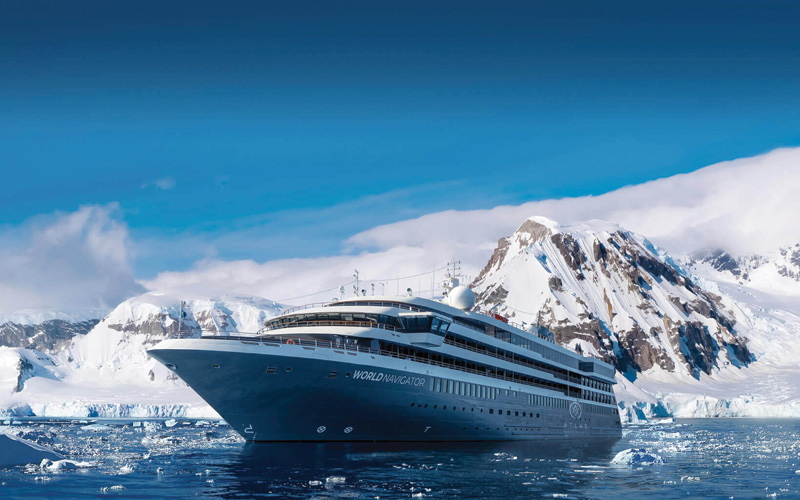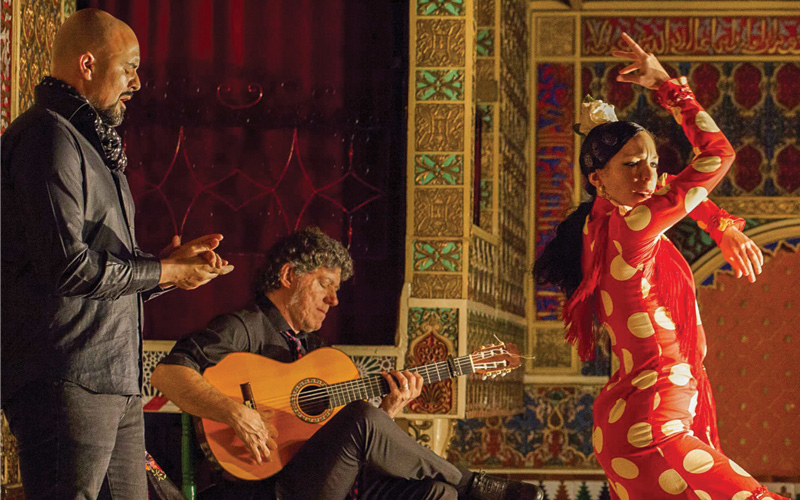2019 is the Year to Fall in Love with Croatia
Croatia, the Adriatic’s shining star, is unlike any other European destination.

With a mix of old world European charm, easy Mediterranean lifestyle, stunning 3,625 miles of coastline dotted by more than 1,000 islands, islets and reefs, fascinating history, rich culture, delectable cuisine and natural beauty – ten UNESCO World Heritage sites and eight magnificent National Parks, considered to be some of Europe’s most well-preserved sites – it is no wonder Croatia is the ultimate destination for those seeking an experience of a lifetime and a new destination to fall in love with.
Regions of Interest
Starting in the capital city of Zagreb, with everything to explore from history and culture, to architecture that is reflective of significant periods in its rich history. The bright yellow Croatian National Theatre building, built in the 1800’s, is the cultural heartbeat of the city and reflects the Viennese style. Other city highlights include the iconic neo-Gothic cathedral and St. Mark’s Church from the early 13th century, red umbrellas of Dolac’s open-air market, and lush greenery of its public parks and gardens. Zagreb is also a city of contrast – old and new architecture, upper and lower towns, modern and traditional events and festivals and an inspiring emerging food scene grounded in centuries of deep traditions with new modern approaches. Zagreb is a destination with activities and attractions to suit every visitor.
The Slavonia region, with rolling wine trails and stunning Kopaki Rit Nature Park, is also home to Bizovacke toplice, a well-known thermal bath and rehabilitation destination and spa. The healing waters of Bizovacke toplice is pumped from a depth of almost 2,000 meters from the remnants of the Pannonian Sea, which contains an abundance of healing minerals and other beneficial ingredients. These treatments in the thermal waters have been known to help those in need of relief for sports injuries and rehabilitation, hence why this has been a destination for athletes seeking a place to physically prepare and condition for their events.
Set along the western part of the country is Istria, the largest peninsula, and a destination that is both a feast for the eyes and palate. Explore medieval hilltop towns perched high above valleys of ancient forest, award-winning olive oil groves, and beautiful vineyards. Storybook Motovun, the charming artist community of Groznjan, or Livade, a destination for those seeking Croatia’s illustrious white and black truffles, are some not to be missed destinations. Coastal towns like magical Rovinj offers some of the best cuisines that can be enjoyed while sipping regional wines and soaking in some of the most magnificent sunsets in the world.
For those chasing history, explore the amphitheater in Pula and other fishing villages along the coast like Umag, Porec, and Novigrad, once Roman settlements to experience a calmer easier Mediterranean lifestyle. Croatia’s epicenter for wellness is the Kvarner region and the city of Opatija, acknowledged as the wellness oasis of the country, with a history dating back to 1873, when the Imperial Train was built and vacationers from Vienna and Hungary voyaged to the region to heal and recover from seasonal ailments. The region’s history as a wellness and hospitality destination, can be seen in the beautiful Austro-Hungarian architecture of luxurious hotels, wellness spas and splendid villas that dot the coastline and hillsides. Visitors to this region are drawn by the benefits of the captivating phenomenon known as the “Kvarner” effect, which embodies all elements that are so special to Croatia and is the ultimate in rejuvenation, health and wellness – taking hold as the earth, ocean, and wind naturally energizes and restores health, vitality and balance. The densely wooded mountain forest of Gorski Kotar, known as the “lungs of Croatia,” has fresh crisp air, and coupled with the healing effects of the northern dry bura wind have helped those with respiratory health ailments. The air quality also helps those who prefer a more active lifestyle to experience the ultimate benefits of the region while enjoying various active outdoor activities from cycling, hiking, swimming, sailing, skiing and of course, yoga. The charming port city of Rijeka has been named European City of Culture in 2020!
The Dalmatian coast has some of Europe’s most sought-after destinations and dramatic coastlines, lined with vineyards, olive oil plantations, natural beauty and the crystal clear waters of the Adriatic. Evidence of Roman and Venetian influence can be seen along the coastal towns full of rich history, medieval architecture, islands, and award-winning beaches, world-class diving and snorkeling, awe-inspiring sunsets, and delectable cuisine and regional wines. Explore Zadar’s two renowned art installations, the Sea Organ and Sun Salutation, discover Sibenik’s UNESCO treasures the Cathedral of St. James and St. Michael’s Fortress, stroll through UNESCO protected Trogir, see why Roman Emperor Diocletian retired in Split and visit his Palace along the famous Riva, and take ferries to explore islands of Hvar (the country’s sunniest), or mysterious Vis, the farthest and all those in between. Of course, a must is Dubrovnik with its white marble streets, historic 16th-century battlements and surroundings, and to learn about the country’s complex cultural heritage.
With more than 100 castles and fortifications, Croatia’s most famous is located on the country’s second largest peninsula of Peljesac. The Walls of Ston with structures that included 20 remaining towers (of the original 40) and five fortresses was built to protect the city of Ston and the Republic of Ragusa from conquerors in the 14th and 15th centuries. Peljesac’s connection to the Adriatic Sea has made it a destination for those who enjoy active adventures – hiking, biking, diving, windsurfing, kitesurfing, and sailing. Explore the area’s rich history of winemaking, sea salt and oyster harvesting, which are considered to be the tastiest in the world.
Cultural events
Year-round, Croatia is constantly brimming with cultural events, from museum and gallery exhibitions to festivals and cultural events. Istria’s Pula Film Festival, held in July, is the oldest film festival in Croatia and one of the oldest in Europe. If music is more your groove, Croatia is the destination for music festivals, especially during the summer – such as the Hideout Music Festival on Zrce Beach on Pag Island – attracting music and sun worshipers alike. In May, Split celebrates Sudamja, the centuries old celebration of Day of St. Domnius, held every year on May 7th, which is also Day of the City of Split. The biggest and most well-known summer festival is ULTRA, held during July in Split, Hvar, Vis and Brac. This year, Dubrovnik will celebrate the 600th anniversary of Orlando’s column built by Bonino from Milan. In fact, 2019 has been proclaimed the year of Orlando! Also, visitors can experience Dubrovnik’s Summer Festival, in its 70th year with music, theater, dance, and other various cultural events among the backdrop of the Old City’s iconic white marbled streets. During the holidays, Zagreb is the destination to get into the spirit of the season, as winner of Best European Christmas Destination for three consecutive years, it should be on your list!
There are very few destinations in the world that have what it takes to be visited and loved by so many diverse travelers. Whether it’s celebrating with friends, family, honeymooners, romantic getaways, or those seeking health & wellness, relaxation, soft adventures, lifeventures, or the ultimate gastronomic experience – it is clear that Croatia is truly a destination for everyone… Croatia IS a “Full of Life” destination!
https://croatia.hr/en-GB





